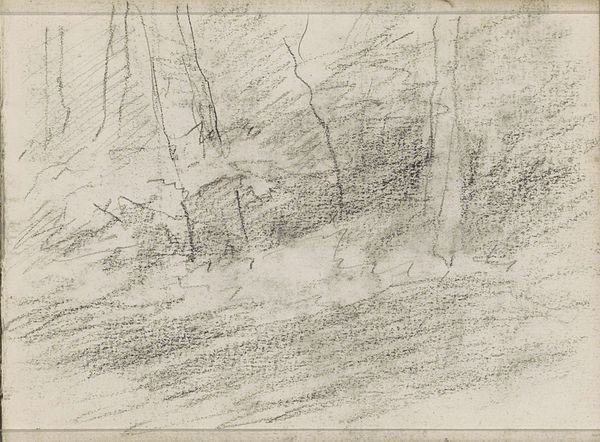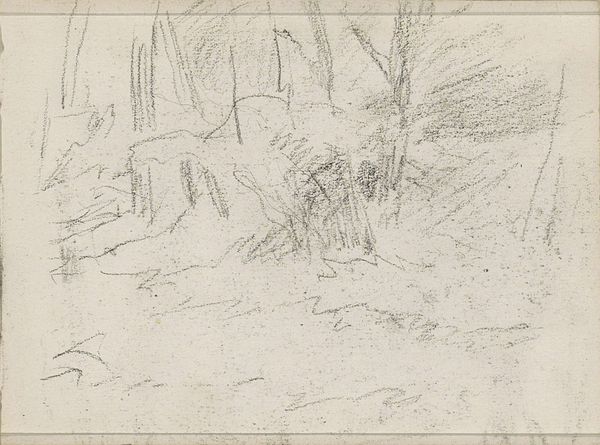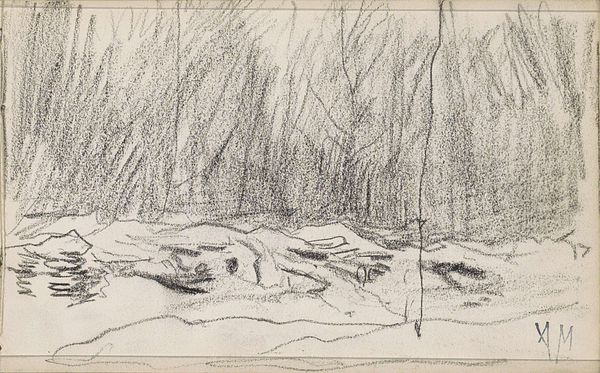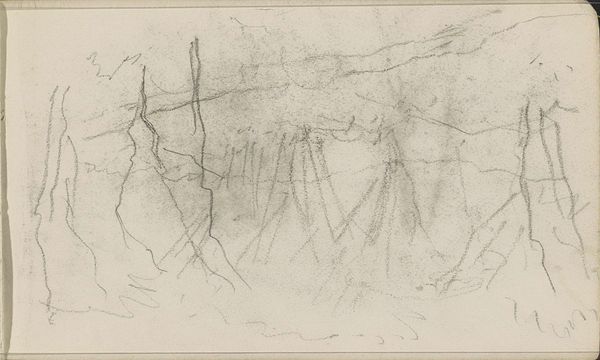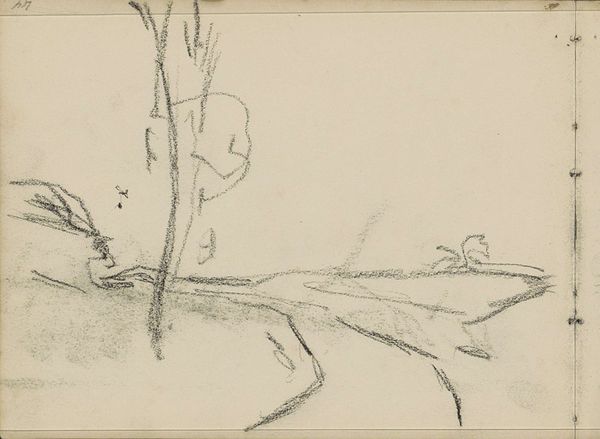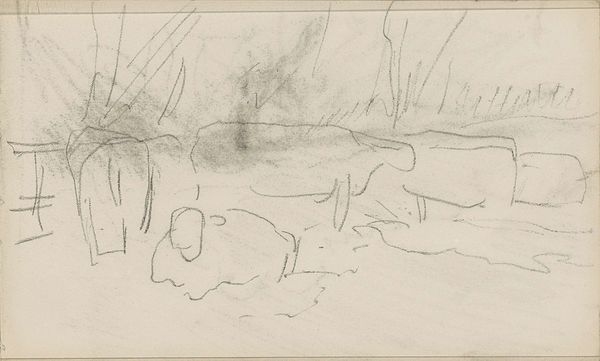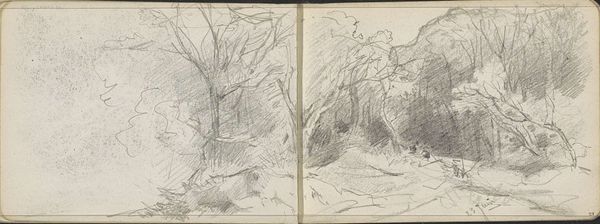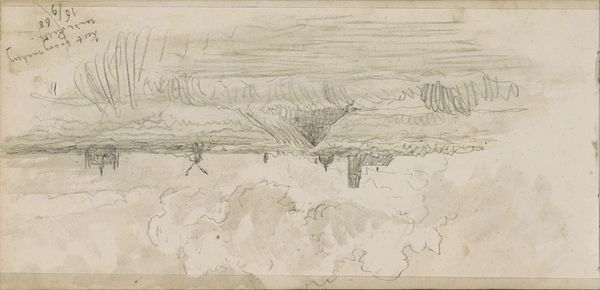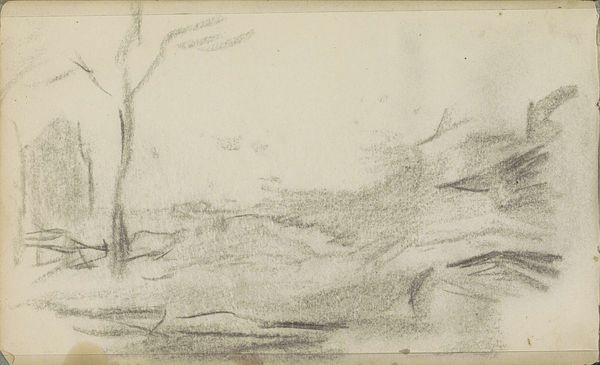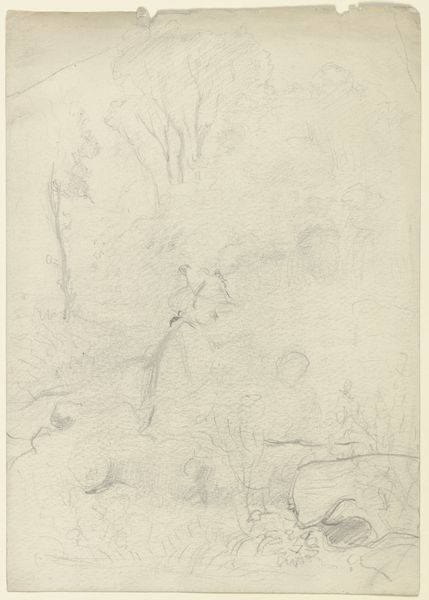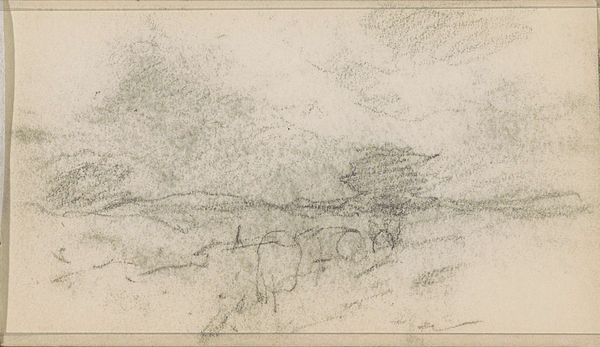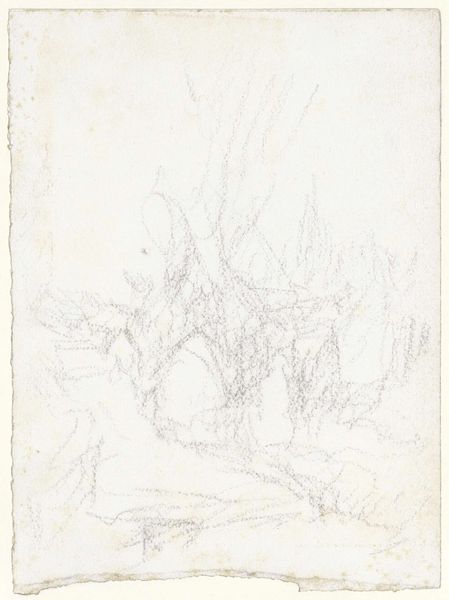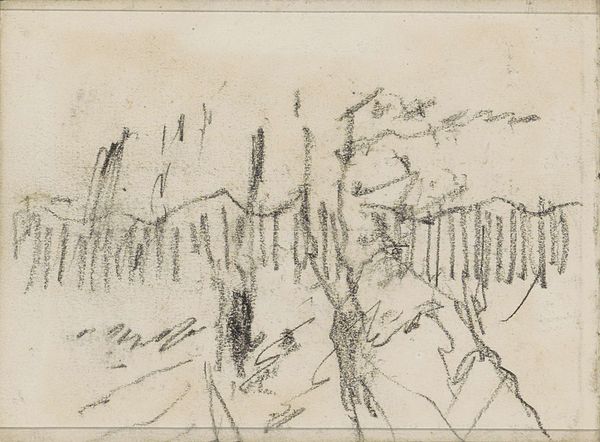
drawing, pencil
#
drawing
#
impressionism
#
pencil sketch
#
landscape
#
pencil
#
realism
Copyright: Rijks Museum: Open Domain
Editor: We are looking at "Herder met een kudde in een landschap," or "Shepherd with a Flock in a Landscape," a pencil drawing made by Anton Mauve between 1848 and 1888. The piece strikes me as incredibly spare and minimal. It almost disappears into the paper. What compositional elements do you find most significant? Curator: The formal arrangement immediately draws my attention. Note the stark contrast created solely through the varying densities of pencil strokes. Consider the rhythmic interplay of vertical lines of the slender tree trunks against the undulating horizontal strokes that suggest the land. The artist has orchestrated a compelling tension between structure and fluidity using minimal means. What do you observe about the treatment of light and shadow in relation to this tension? Editor: I notice there is not much shadow, only gradations of light. Is that significant? Curator: Precisely! The absence of strong shadows directs our focus towards the pure forms themselves. The network of lines almost acts as a sign, or a symbol. Consider the overall impact: what statement does this strategic simplification make about the artist's perception of landscape, the pastoral theme? Editor: It's like he's distilling the landscape down to its barest essence, using just a few lines to convey so much. Curator: Indeed. This abstraction allows us to engage not just with the scene depicted, but also with the fundamental components of art itself—line, tone, and composition. Furthermore, consider that it asks us to participate actively in meaning-making. How do you feel about that request? Editor: That's really fascinating. It is almost less about the subject and more about the making. It definitely shifts my focus! Curator: Precisely. And, in turn, enhances the visual and conceptual rigor. Editor: This close formal reading gives me a new perspective. It goes to show that even seemingly simple artworks have a lot to unpack. Curator: Indeed! Close observation combined with theoretical reflection are fundamental practices for developing a deeper appreciation for art.
Comments
No comments
Be the first to comment and join the conversation on the ultimate creative platform.

